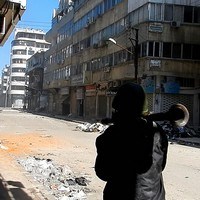On Feb. 16, the Supreme Military Council (SMC) of Syria’s Western-backed rebel grouping, the Free Syrian Army (FSA), expelled its chief of staff, Gen. Salim Idris. Idris, who had long been seen as ineffective, was replaced by Brig. Gen. Abdul-Ilah al-Bashir, a Syrian army defector and head of the FSA’s Quneitra military council. His deputy is to be Col. Heitham Afeisi, co-founder and deputy commander of the Syrian Revolutionaries Front, a large FSA outfit mainly active in the northwest.
The move capped a difficult six months for Syria’s rebels. Plagued by divisions and infighting, as well as indecision among their external sponsors, they have lost ground to government forces. Idris’ sacking will likely reinforce the perception that the SMC is an ineffectual organization that has been only partially successful in channeling money and weapons to Syria’s various rebel groups and almost entirely ineffective in coordinating their actions.
Yet despite the confusion at the SMC, some things are going the Syrian rebels’ way. Their organization and tactics have improved, and they have better weapons and strategic depth, as well as superiority in manpower. Rebel forces have also achieved far greater cohesion over the past few months than they had for 2012 and much of 2013. Instead of hundreds of relatively independent groups, it is now possible to identify six major alliances that dominate the armed opposition.

